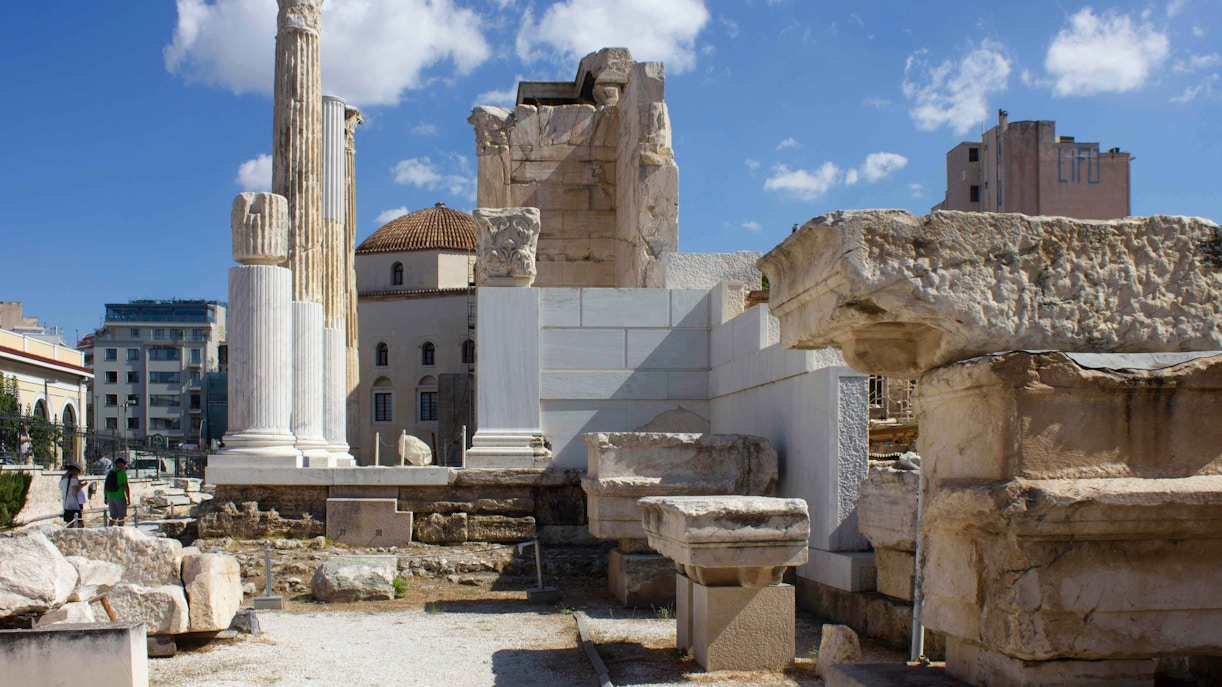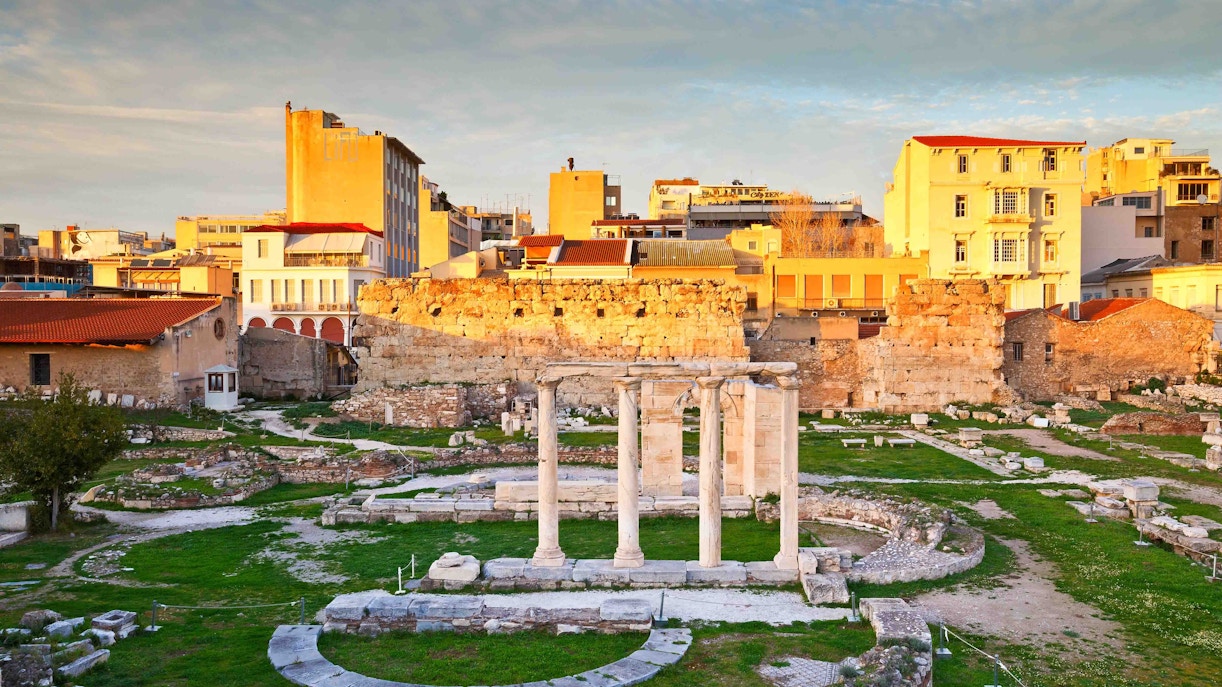Official name: The Library of Hadrian
Location: North of the Roman Agora of Athens
Date of construction: 132 AD
Architect: Emperor Hadrian
Function: Library, state archive, venue for lectures
Built in 132 AD by the Roman emperor Hadrian, the Library of Hadrian was the largest structure constructed by the emperor during his reign. Apart from being the largest library in Athens at the time, it also functioned as an archive for state and legal documents. It hosted philosophical schools and lectures, and contained reading, music, and exhibition halls. Today, you can see the ruins of this magnificent structure, including some of the towering columns along the west wall.


Hadrian’s Library is beside Monastiraki Square, easily reached via metro. You'll need to buy an entry ticket, which generally costs €6. Allow 30–60 minutes to explore its columns, courtyard, and Byzantine church remains. Best visited early mornings.
To visit the Library of Hadrian, you can book your Acropolis tickets online for a date and time of your preference.
Hadrian’s Library was built in 132 AD, making the original structure more than 1,800 years old.
Apart from a repository of books, Hadrian’s Library served as an archive for state documents, and also held academic and philosophical lectures.